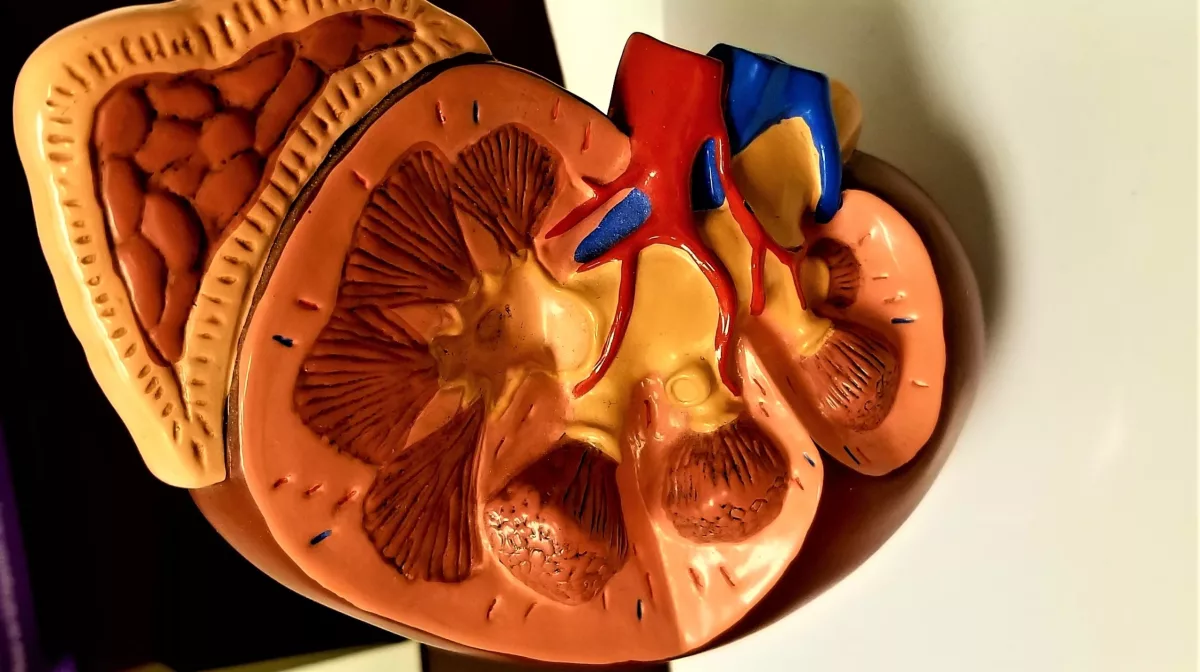A rare health condition that causes blood vessels in the adrenal glands to rupture is called Waterhouse-Friderichsen syndrome (WFS). One of the most common causes of this syndrome is an infection. If you develop this syndrome and do not get immediate treatment, it may lead to death. Healthcare professionals usually treat this syndrome with antibiotics, hormone medicines, or surgery (sometimes). Surgery is often recommended by doctors to repair the adrenal glands.
This condition may affect either one or both adrenal glands. Usually, adrenal glands stop working because of bleeding (also known as adrenal hemorrhage). When a person does not get treatment, the adrenal glands do not produce hormones (such as cortisol). This condition is often called an adrenal crisis.
Waterhouse-Friedrichsen syndrome is also known as hemorrhagic adrenalitis.
This condition occurs quite rarely, and it causes approximately 1% of deaths in routine autopsies.
Symptoms
Those who develop WFS usually experience the following symptoms. For example:
- Fever
- Chills
- Headaches
- Nausea
- Vomiting
- Muscle pain (often in the lower back, abdomen, or legs)
- Loss of consciousness (also known as syncope)
- Joint pain
If hemorrhage affects the adrenal glands or other parts of the body, it may lead to the following symptoms. Examples include:
- Skin rash
- Septic shock
- Disseminated intravascular coagulation (DIC)
Additionally, check below the clinical symptoms of adrenal hemorrhage:
- Pain between the lower ribs and hips (loins)
- Sluggishness
- Diarrhea
- Malaise
- Pain in the abdominal area
What Causes Adrenal Hemorrhage?
There are multiple causes of WFS. It may happen due to a bacterial or viral infection. Check below the bacterial causes of WFS:
- Pseudomonas aeruginosa
- Streptococcus pneumoniae
- Meningococcus bacteria
- Escherichia coli (E. coli)
- Staphylococcus aureus
- Group A beta-hemolytic Streptococcus
- Haemophilus influenzae
- Capnocytophaga canimorsus
- Enterobacter cloacae
- Pasturella multocida
- Moraxella duplex
- Neisseria gonorrhea
- Plesiomonas shigelloides
- Bacillus anthracis
- Legionella pneumophila
- Treponema pallidum
- Rickettsia rickettsii
Viral Causes
These include:
- Cytomegalovirus (CMV)
- Parvovirus
- Epstein-Barr virus
- Ebola virus disease
- Varicella-zoster virus
Other Causes
This syndrome may also happen due to anticoagulants (also known as blood thinners), thrombocytopenia, and damage to the adrenal glands.
Risk Factors
There are some factors that may elevate your risk of developing WFS. Check below some of them:
- Postoperative state
- Viral or bacterial infections
- Weakened immune system
- Hypotension (low blood pressure)
- Sometimes WFS is a complication of pregnancy
- Injuries to the adrenal glands
In addition, children are more likely to develop WFS than adults.
What Are The Possible Complications of Waterhouse-Friderichsen Syndrome?
People with this syndrome may experience some complications, especially if they do not get treatment. For example:
- Septic shock
- Adrenal crisis
- Organ failure (including the kidneys, liver, and lungs)
This article does not contain all possible complications of WFS. Talk with your doctor for more details.
Can Waterhouse-Friderichsen Syndrome Be Prevented?
While there is no way to prevent this condition, the following tips may help reduce the risk. For example:
- Treat existing infections immediately
- Get a meningococcal bacteria vaccine
- Regularly wash your hands with soap and warm water to prevent infections
Diagnosis
Physicians usually diagnose this condition by performing a physical examination, asking questions about the symptoms, and evaluating your medical and family history. In some cases, diagnosing this syndrome can be difficult because it often resembles septic shock. In such cases, physicians perform the following tests to confirm this condition and rule out others that cause similar symptoms. Check some examples below:
- Imaging tests – These include CT (computerized tomography) scans, ultrasound, and MRI (magnetic resonance imaging) scans.
- Blood tests – These tests are often done to check for bacterial or viral infections.
Meningococcus Bacteria Tests
Physicians may perform additional tests if they think WFS happens due to this type of bacteria. For example:
- Lumbar puncture (also called spinal tap) – This test involves a needle that is inserted between two bones in the lower back to get a small sample of spinal fluid for testing.
- Skin biopsy – If you develop a skin rash, doctors may get a small amount of affected skin to test in the laboratory.
- Gram stain – This test involves collecting other samples from the affected areas of the body to check for bacteria.
- Urinalysis – This test is also called a urine test, and it helps check for infections.
Acute Adrenal Crisis Tests
The following tests are often used to diagnose adrenal crisis. For example:
- Adrenocorticotropic hormone (ACTH) stimulation test – This is a specific test used to determine how well the adrenal glands respond to ACTH. It involves a shot of ACTH and taking blood samples for testing after 30 to 60 minutes.
- Blood sugar tests – This test is also done by getting a blood sample to check the amount of glucose in the blood.
- Cortisol test – Physicians may take a sample of blood, urine, or saliva to determine the amount of Cortisol your adrenal glands produce and release.
- pH blood test – To perform this test, doctors use a specific needle to get a blood sample and conduct an arterial blood gas (ABG) test or electrolyte panel to measure blood pH. While pH levels range from 0 (very acidic) to 14 (very basic or alkaline), the normal ranges of blood pH are between 7.35 and 7.45.
- Potassium blood test – This blood test is used to measure Potassium levels in the blood. This is an important nutrient that helps nerves and muscles work correctly.
- Sodium blood test – In such cases, doctors get a blood sample to check Sodium levels in the blood.

Treatment
Once you are diagnosed with WFS, doctors will prescribe antibiotics while performing additional tests to determine the exact cause of the disease. They will also monitor electrolyte and water levels to prevent dehydration or water intoxication.
Usually, those who develop WFS also have sepsis. When doctors begin to manage sepsis symptoms, you may need Glucocorticoid and Mineralocorticoid medicines. These medications are steroid hormones that help lessen inflammation and balance water and salt in the blood.
Some people with WFS need blood transfusions or an angioembolization. This treatment option involves a combination of angiogram and embolization to check for narrowed or blocked arteries that supply the adrenal glands.
Almost everyone who develops Waterhouse-Friderichsen syndrome administers hormone medicines for the rest of their lives.
Frequently Asked Questions
How soon after treatment will I feel better?
Most people begin to feel better within 10 days after treatment. However, a lot of people may continue to experience physical and emotional symptoms for months to years after a complete recovery. Examples include insomnia (sleeping disturbances), fatigue (extreme tiredness), appetite changes, anxiety, depression, frequent infections, and others.
When should I go to the ER?
Immediately go to the nearest emergency room (ER) or call 911 in the U.S. if you experience WFS symptoms that do not improve or worsen.
What is the survival rate for Waterhouse-Friderichsen syndrome?
Roughly 15% of people with acute bilateral adrenal bleeding are dying. However, the fatality rate is approximately 50%, especially if you do not get immediate treatment. If you have additional questions, ask your healthcare provider.



